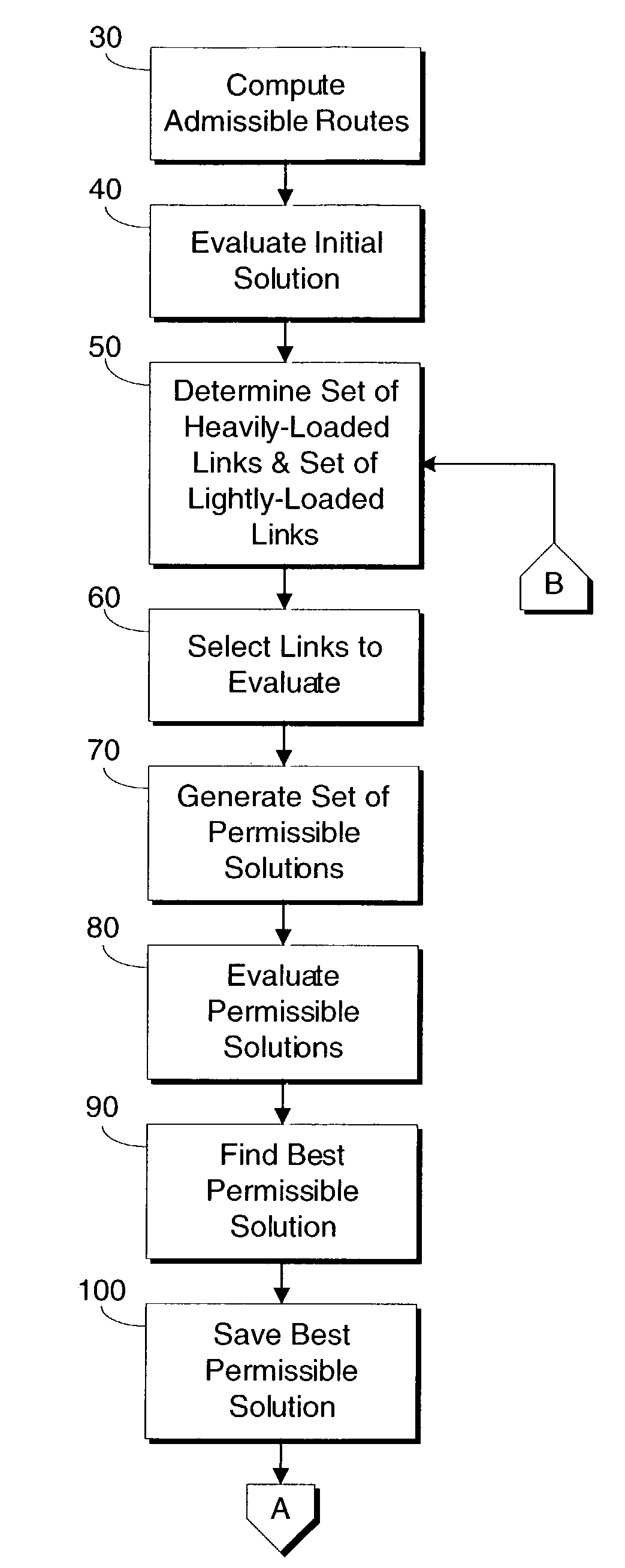Method for assigning link weights in a communications network
a technology of link weights and communications networks, applied in the field of network communications, can solve the problems of increasing failures, affecting the performance of communications networks, and affecting and achieve the effect of optimizing the performance of communications networks
- Summary
- Abstract
- Description
- Claims
- Application Information
AI Technical Summary
Benefits of technology
Problems solved by technology
Method used
Image
Examples
Embodiment Construction
[0022]The present invention provides a method and a system for optimizing the performance of a communications network by determining a single set of link weights that make a network robust to single-link failures. By utilizing the link weights determined by the present invention, a network can function well when there is a link failure without changing link weight assignments.
[0023]In FIG. 1, the topology of a communication network is shown. As is understood in the field, a communication network generally includes a number of routers (represented by circles containing the letters A through M) connected by a number of links (represented by lines referred to by the numerals 1 through 20). It should be understood that the term “link” includes, but is not limited to, wired media, such as cable, and wireless media, such as acoustic, infrared, radio, microwave, spread-spectrum, and other wireless media technologies.
[0024]The purpose of a communication network is to transfer data from one ...
PUM
 Login to View More
Login to View More Abstract
Description
Claims
Application Information
 Login to View More
Login to View More - R&D
- Intellectual Property
- Life Sciences
- Materials
- Tech Scout
- Unparalleled Data Quality
- Higher Quality Content
- 60% Fewer Hallucinations
Browse by: Latest US Patents, China's latest patents, Technical Efficacy Thesaurus, Application Domain, Technology Topic, Popular Technical Reports.
© 2025 PatSnap. All rights reserved.Legal|Privacy policy|Modern Slavery Act Transparency Statement|Sitemap|About US| Contact US: help@patsnap.com



